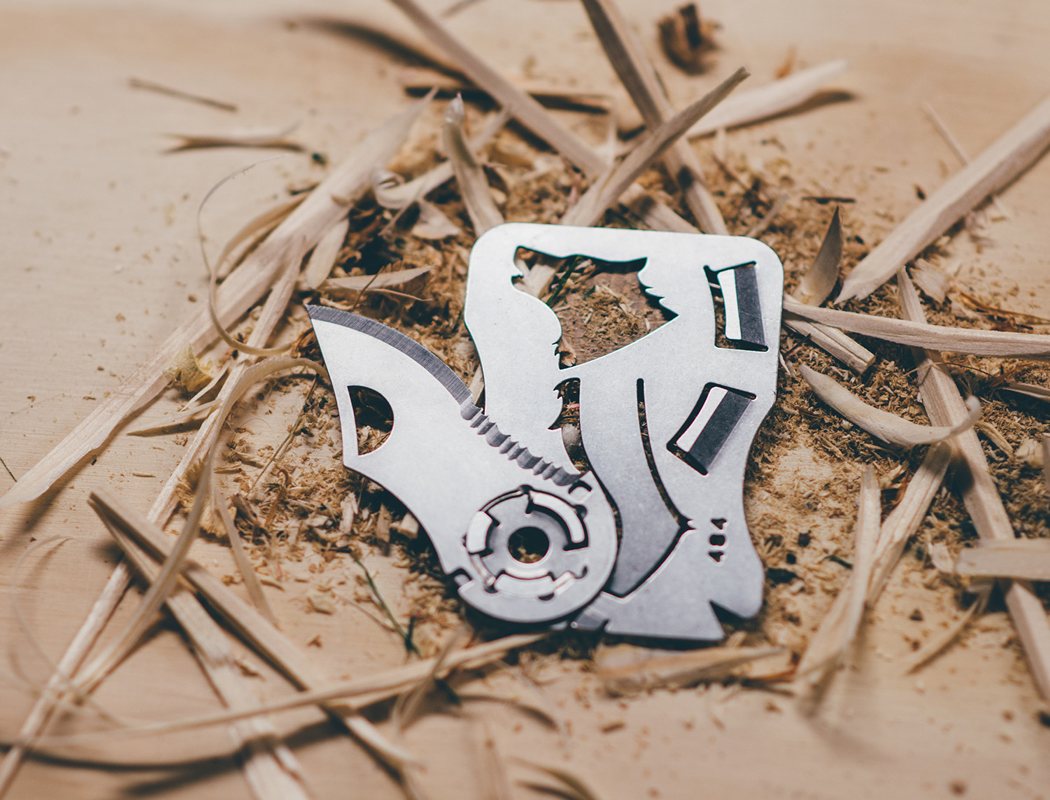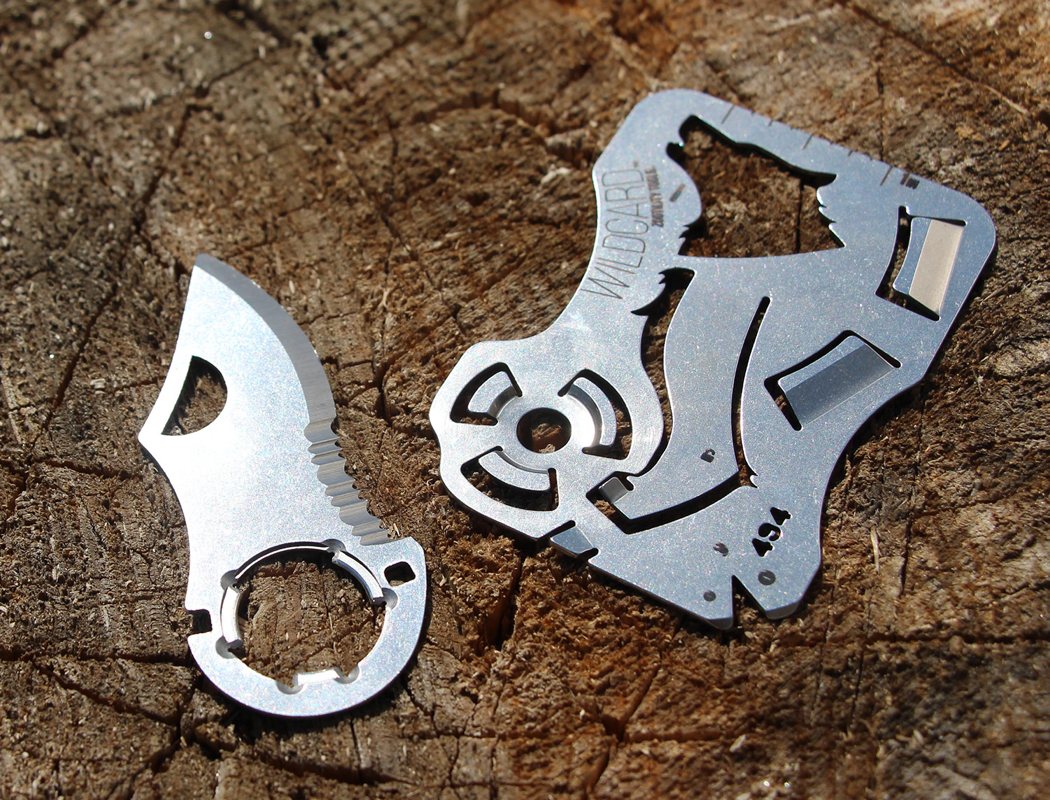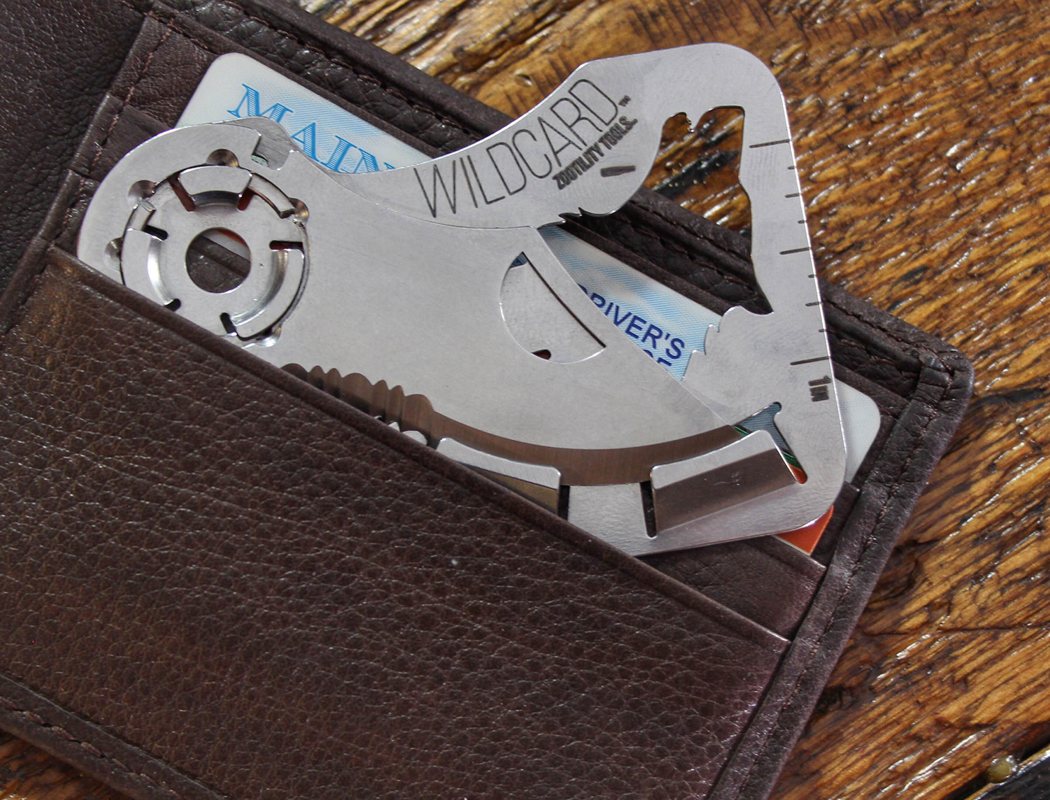Here’s a product that’s going to be interesting to talk about. Given the tension in today’s world, I would hardly recommend you carry a concealable knife with you, but there’s something we can learn from Wildcard. Wildcard essentially puts a multi-tool in your wallet with an additional switchblade (of sorts) attached to it. Now the interesting bit is the way the switchblade is integrated into the design. Instead of having a hinging or pivoting point, it has a pivoting ring, giving it more strength and making the build more robust. Design details like this come from a place of ingenuity and should be marveled.
The Wildcard’s blade design is made to be detachable, so if you’re ever at an airport and you happen to have carried it along, you can discard the blade and use the rest of the multi-tool card whenever. The blade is also separately available online for such scenarios.
The Wildcard puts not just tools and equipment but also potential weaponry in your pocket. While its design ensures that it won’t accidentally cut you or any objects while in your pocket or your wallet, let’s just remember that products like these should be used responsibly and for their intended purpose as tools, and not weapons. Peace out!
Designer: Nate Barr
Buy It Here: $29.99 $35.00


























